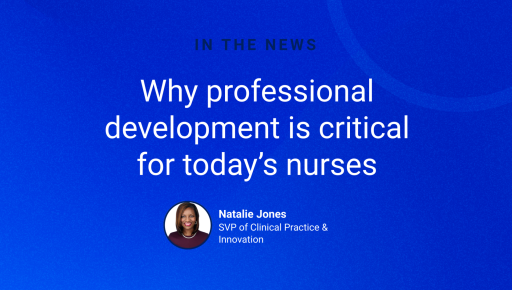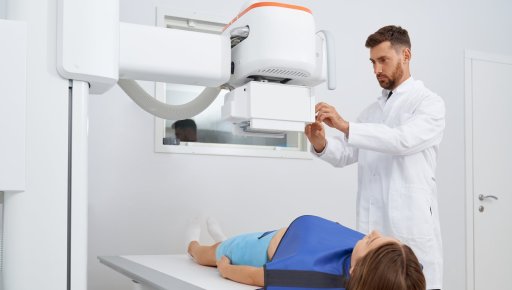In the complex world of healthcare, the term "patient-centered care" has gained prominence, signifying a pivotal shift in the approach to healthcare delivery. At the core of patient-centered care lies the recognition that it's not just about treating medical conditions; it's about addressing the unique experiences, values, and needs of each patient. This article details the concept of patient-centered care in the context of healthcare staffing, exploring its significance, benefits, challenges, and practical strategies for implementation.
What is Patient-Centered Care?
Patient-centered care is an approach to healthcare that emphasizes the importance of tailoring medical care and services to the individual needs and preferences of patients. It recognizes that healthcare is not just about treating medical conditions but also about addressing the unique experiences, values, and goals of each patient.
In a practical sense, studies have shown that patient-centered care can improve patient satisfaction, achieve better health outcomes, and reduce healthcare costs.
Core Values and Principles of Patient-Centered Care
Respect for Patients' Values and Preferences: Healthcare providers should actively listen to patients and involve them in decision-making. This includes respecting their cultural, religious, and personal beliefs.
Understanding the Patient as a Whole Person: Instead of just focusing on a patient's medical condition, patient-centered care considers the patient's entire self—meaning their physical, emotional, social, and psychological well-being.
Collaborative Decision-Making: Patients are encouraged to actively participate in their care, make informed choices, and be part of the healthcare decision-making process. This often involves providing patients with information about their condition and treatment options.
Access to Information: Patients should have access to their medical records, test results, and other relevant information to better understand their condition and care plan.
Holistic Approach: Healthcare providers consider the impact of a patient's lifestyle, environment, and social factors on their health. This can involve addressing social determinants of health, such as housing, employment, and access to nutritious food.
Empathy and Communication: Healthcare providers should demonstrate empathy, active listening, and effective communication to establish trust and a strong patient-provider relationship.
Coordination of Care: In a patient-centered care model, various healthcare professionals work together to provide seamless and coordinated care. This reduces fragmentation and enhances the patient's experience.
Continuity of Care: Patients should have a consistent and continuous relationship with their primary care providers, fostering a deeper understanding of the patient's health history and needs.
Respect for Patient Privacy and Dignity: Patients' privacy and dignity should be respected at all times during their healthcare experience.
Feedback and Quality Improvement: Healthcare institutions should actively seek feedback from patients to improve the quality of care and services continually.
Patient-centered care is often seen as a response to traditional healthcare models that may have been more provider-centric. It aims to empower patients, improve patient satisfaction, and ultimately lead to better health outcomes by aligning care with the individual needs and values of each patient.

The Role of Healthcare Staffing in Patient-Centered Care
Staffing is a crucial component of any healthcare system. It involves recruiting, training, and placing qualified healthcare professionals in various healthcare settings, ensuring that the right people are available to provide patient care. Prolink’s comprehensive workforce solutions and deep pool of qualified talent ensure your hospital receives the best talent, every time. Prolink closely collaborates with your organization to better understand your staffing needs, your values, and your culture.
If your organization considers patient-centered care to be a primary focus, Prolink will find clinicians with the proper training and experience to provide the best patient-centered care to your facility. Partnering with Prolink allows your staff to focus on the success of your facility and patient outcomes.
Challenges in Medical Staffing
Health systems face a variety of challenges when it comes to hiring experienced, well-trained clinicians committed to providing the best care for their patients. Healthcare professionals often face high levels of stress and burnout due to heavy workloads and demanding schedules, which can impact the quality of care they provide.
The issues of clinician stress and burnout are compounded by staff shortages, which are an increasing problem in the modern healthcare landscape. Half a million nurses left healthcare by the end of 2022, according to an estimate from the American Hospital Association (AHA), which would have brought the overall shortage of nurses at the time to 1.1 million. As clinician turnover continues to rise, many health organizations have insufficient staff to meet patient needs.
Last but not least, medical professionals may have varying levels of experience and training, which can impact the consistency of patient care. Half of nurses are considering leaving the profession, according to a 2022 study, and the resulting high rate of turnover may lead to more inexperienced clinicians in the workforce.
Implementing Patient-Centered Care
Due to the potential that patient-centered care offers a struggling healthcare workforce, health systems and staffing agencies alike must begin to understand it on a deep functional level. This includes the planning and implementation of practical strategies to increase its prevalence among healthcare professionals and providers.
Implementation of patient-centered care begins with proper training and education. Healthcare professionals should be trained in patient-centered communication skills, including active listening, empathy, and effective patient-provider interactions. Clinicians should also receive training on cultural competence to better understand and respect the diverse values and preferences of patients from various backgrounds.
Another big step towards the implementation of patient-centered care practices in any healthcare setting is a strong collaboration between staff members. Ensuring that knowledge about a patient’s background, preferences, and unique needs is shared among each member of the patient’s care team goes a long way towards that patient feeling understood and cared for. If they know their needs are being put first, cooperation and better outcomes are likely.
Resources and Technology Required for Patient-Centered Care
Although easier said than done, more resources allocated to each patient will of course increase the likelihood of a positive health outcome. Health systems should focus their efforts, in tandem with a trusted workforce solutions partner like Prolink, on adjusting their staffing levels to ensure that each clinician has time to engage with patients, listen to their concerns, and engage in collaborative decision making. This can be achieved through a more flexible scheduling process that allows staff to allocate more time to patients with complex needs or those who require additional attention.
Technology-based solutions are also becoming increasingly common among larger healthcare systems, and these advancements go hand in hand with the implementation of patient-centered care by improving accessibility and consistency of care. Electronic Health Records (EHR) systems allow for easy access to patient information, ensuring that all members of a care team are well-informed about a patient’s history, values, and preferences. Telemedicine is quickly being embraced by healthcare organizations of all sizes and can provide patients with more convenient access to care, especially in underserved areas.

Patient Feedback and Continuous Improvement
It’s crucial to remember that, as a health system increases its focus on patient-centered care, that the patients themselves are always the main priority. As such, patient feedback plays a vital role in the health system’s implementation and improvement of its patient-centered processes. A regular collection and evaluation of patient feedback is essential, and both qualitative and quantitative data should be represented and discussed. Health systems should regularly review patient feedback and outcomes data to identify areas where patient-centered care can be enhanced and implement quality improvement initiatives accordingly.
A Philosophy for Better Outcomes
Patient-centered care is not just a buzzword in healthcare; it's a philosophy that drives better healthcare outcomes and improves the overall patient experience. In the realm of medical staffing, implementing patient-centered care requires a multifaceted approach, from recruitment and training to resource allocation and technology integration. By prioritizing the patient's values and preferences, healthcare organizations can create a culture of care that not only benefits the patients but also the healthcare professionals providing the care. Patient-centered care is an ongoing commitment to continually improve and innovate, ensuring that patients remain at the center of the healthcare experience.
Prolink Solutions for Patient-Centered Care
Healthcare systems looking to improve outcomes with patient-centered care principles should consider turning to the workforce solutions experts at Prolink. As a strategic partner to a broad network of hospitals, healthcare facilities, doctors, and skilled providers, Prolink provides comprehensive staffing solutions that address a facility’s individual needs. To get in touch and learn more about what Prolink can do for your organization, click below.









